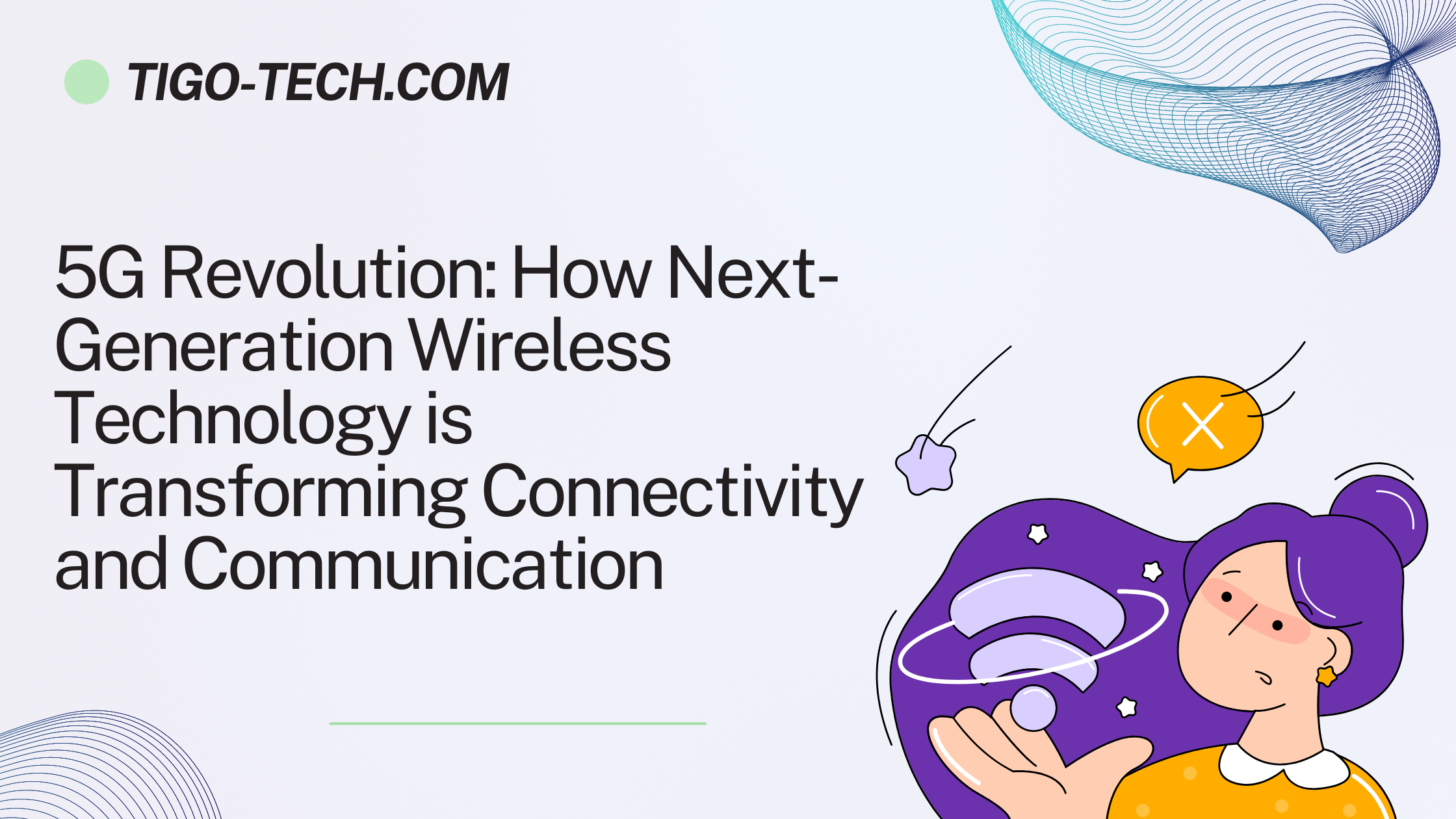Introduction:
The advent of 5G technology heralds a new era of connectivity, promising faster speeds, lower latency, and greater capacity than ever before. As the fifth generation of wireless technology, 5G is poised to revolutionize how we communicate, work, and interact with the world around us. In this blog post, we’ll explore the 5G revolution and examine how this next-generation technology is transforming connectivity and communication on a global scale.
- Unprecedented Speeds and Bandwidth:
One of the defining features of 5G technology is its ability to deliver blazing-fast speeds and unprecedented bandwidth. With speeds up to 100 times faster than 4G LTE, 5G networks enable near-instantaneous downloads, seamless streaming of high-definition content, and real-time responsiveness for applications such as gaming, augmented reality (AR), and virtual reality (VR).
- Ultra-Low Latency:
5G technology significantly reduces latency, or the time it takes for data to travel between devices and network servers. With latency as low as a few milliseconds, 5G enables ultra-responsive communication and real-time interactions, making it ideal for applications that require instantaneous feedback, such as autonomous vehicles, remote surgery, and industrial automation.
- Massive IoT Connectivity:
5G networks support massive Internet of Things (IoT) deployments, connecting billions of devices and sensors across various industries. From smart cities and autonomous vehicles to industrial automation and healthcare, 5G enables seamless connectivity and communication between IoT devices, unlocking new opportunities for efficiency, innovation, and automation.
- Enhanced Mobile Experiences:
5G technology enhances mobile experiences, providing users with faster download speeds, smoother streaming, and better coverage in densely populated areas. With 5G-enabled smartphones and devices, users can enjoy immersive multimedia experiences, seamless video calls, and high-speed internet access on the go, transforming how we stay connected and productive while mobile.
- Transformative Applications:
The high-speed, low-latency capabilities of 5G technology enable transformative applications across various industries. In healthcare, 5G facilitates remote patient monitoring, telemedicine consultations, and augmented reality-assisted surgeries. In manufacturing, 5G enables real-time monitoring of equipment, predictive maintenance, and remote control of machinery. In entertainment, 5G powers immersive gaming experiences, augmented reality apps, and ultra-high-definition streaming services.
- Economic and Social Impact:
The widespread adoption of 5G technology is expected to have a significant economic and social impact, driving innovation, productivity, and economic growth. 5G-enabled industries are poised to create new jobs, spur entrepreneurship, and fuel economic development, while also improving access to education, healthcare, and public services in underserved communities.
Conclusion:
In conclusion, the 5G revolution is transforming connectivity and communication on a global scale, ushering in a new era of high-speed, low-latency wireless technology. With its unprecedented speeds, ultra-low latency, and massive IoT connectivity, 5G enables transformative applications across industries, enhances mobile experiences, and drives economic and social progress. As 5G networks continue to expand and evolve, the possibilities for innovation and connectivity are limitless, paving the way for a more connected and technologically advanced future.
